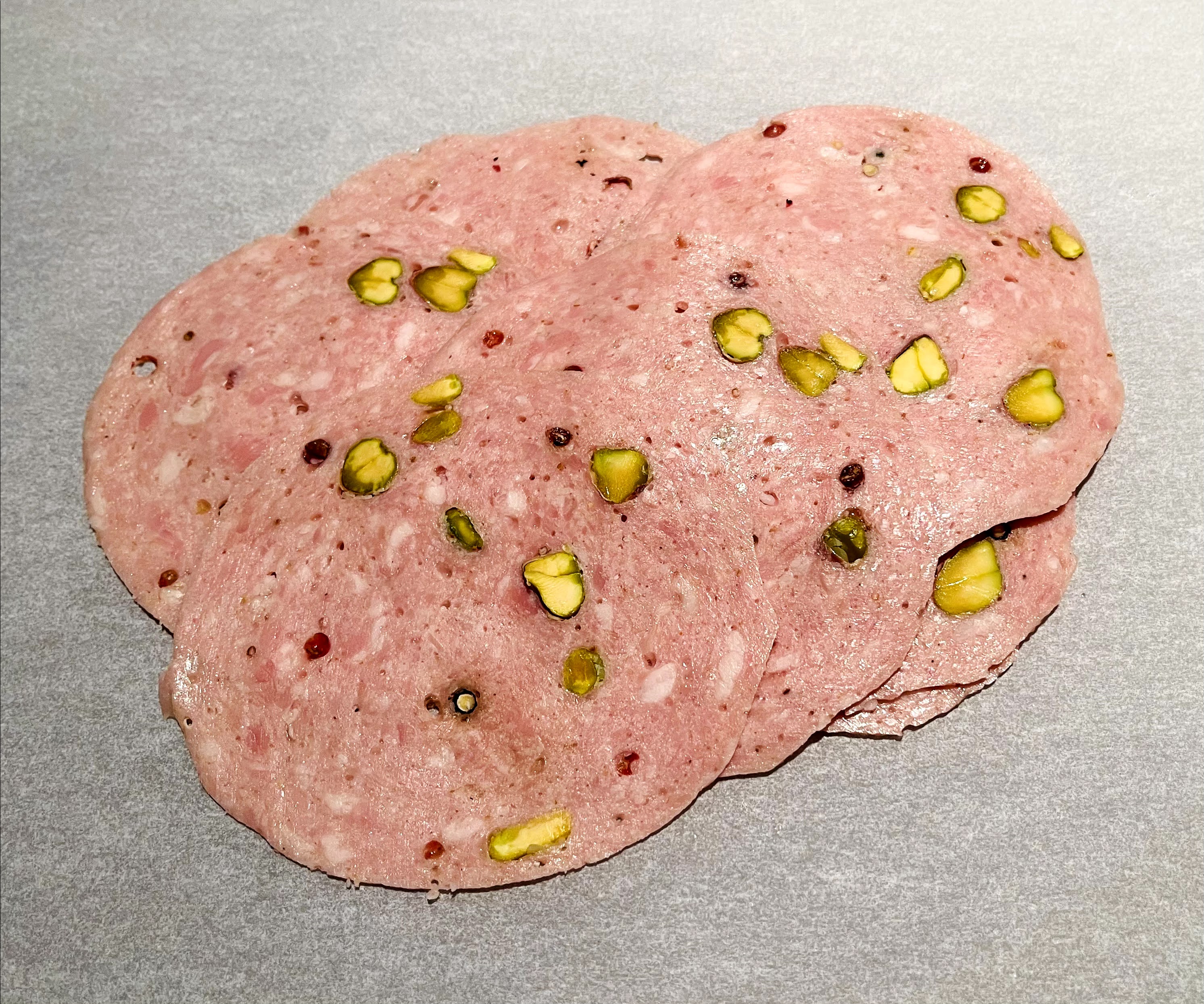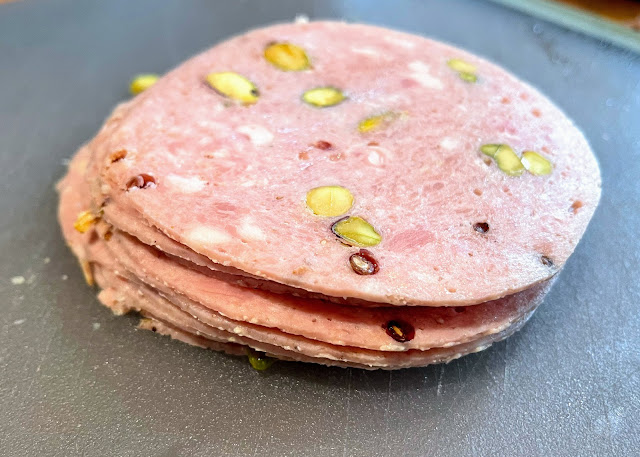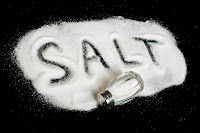I've been wanting to make this for a while but needed to source the Veal. Finding a real butcher is not the simplest thing to do in the NW, and then asking them to order you something specific is a tall order.
You may or may not know about my obsession with cured meat, but it's real 🤣🤣🤣. I grew up in New York City's melting pot, and I've had just about everything cured under the roof. So what's changed? About 21-years ago, I quit eating pork for religious reasons, but that doesn't mean I don't miss eating this stuff.
I've made all kinds of cured meats like bacon, Vealcettea (Duck, Veal, and Beef) to replace Pancetta, Salumi's, Salame's, Sausages, Chorizo, Gabagool, and many many more.
Let's get down to the nitty-gritty. Pork has been labeled the other white for an excellent reason. There was a push back in the day to eat less fat, and breeders started producing leaner pigs. Modern-day Pork will never taste that good because it is not marbled with fat. Pork has always been, at least for me, a canvas to make into anything because it really does not have any flavor.
I've been making sausages and cured meat for over 30-years, and these last 21 years or so, I've been making cured meats but using only those proteins considered Biblically Kosher. Replicating with great success pork cured meats I grew up in has been a hobby of mine.
🥩🥩🥩🥩🥩🥩🥩🥩🥩🥩🥩🥩🥩🥩🥩🥩🥩🥩🥩🥩🥩🥩🥩🥩🥩🥩🥩🥩🥩🥩

Cure #1- Pink Curing Salt #1 contains 6.25% Sodium Nitrite and 93.75% table salt. Used in preservation, smoking, and curing. If you are cold- smoking or creating a hospitable environment for Botulism Cure #1 will inhibit the Bacteria's growth. C #1 is also used for color and flavor development, so I am adding it here.
Dextrose- It serves as a nutrient for lactic acid organisms that help fermentation, giving your sausages and other processed meats a tangy flavor. It's about 70% as sweet as sugar and works better than table sugar in cured meats.
Sodium phosphates are found in fast food, deli meat, processed meat, canned tuna, baked goods, and other manufactured foods. It serves a variety of functions:
- It thickens food. It stabilizes the texture of processed foods, such as mashed potato mixes.
- It cures meat and meat products. It helps to keep deli meats and bacon moist, avoiding spoilage.
- It’s a leavening agent. It helps dough rise in commercially prepared cakes and breads and in cake mixes.
- It’s an emulsifying agent. It acts as a stabilizer to keep oil and water mixed together in certain types of food, such as processed cheese.
- It balances pH levels in processed food. It stabilizes the balance between acidity and alkalinity, extending shelf life and improving taste.
Non-Fat-Milk- It helps mostly as a binder and helps with moisture retention. You can use Soy, Carrot Fiber Binder, and Potato Starch for those that keep strict Kosher.
Corn Syrup Solids- Also adds enhanced binding qualities and aids in sweetening and holding the color of cured meats.
Sodium Erythorbate- In meat curing, it controls and accelerates the nitrite curing reaction and maintains the color brightness. It is used in frankfurters, bologna, and cured meats. Sodium Erythorbate should always be added when using curing salt (nitrites/nitrates). This is because, when used in sausages, the processing time can be cut down (up to one-third), as the erythorbate accelerates the rate of curing by breakdown the nitrite and speeding up the setting of the pink color pigment.
Meat Glue- Transglutaminase Binds proteins together. For an in-depth view, Click HERE. There are many types of Meat Glues, and I prefer the RM version. For those who keep strict Kosher, you can use the TI version, OU, and parve. Also, Vegan gelatin will work too.
Yeast Extract- It's a flavor enhancer much like MSG and is found in most foods. More in-depth view CLick HERE. But in NO way is this MSG. Autolyzed yeast, Yeast Extracts, and hydrolyzed proteins, among other ingredients, are entirely natural ingredients that happen to have substantial amounts of glutamates but nowhere near the concentration found in MSG.
Umami (See pic)- This is a product that contains both Disodium inosinate and Disodium guanylate. This product can be found in many commercial foods, including potato chips, instant noodles, pizza, ice-cream, and many snacks. When combined with Yeast Extract and MSG, it's an UMAMI boost to the 10 power.
Sourcing- I get the Yeast Extract HiMedia RM027-100G Yeast Extract Powder, 100 g and Sodium Inosinate, Guanylate - I+G (100 gram) Meat Glue RM from Amazon. The other stuff I get from Sausagemaker or from Waltons.
Preparation- Set aside the Black, Pink Peppercorns and Pistachios. You will need a spice mill or grinder for this next step unless you use ground spices. �And no, I have not forgotten the wine or the water.
Grind the White Pepper, Coriander, Anise, Caraway Seeds. After you process everything, toss in Garlic Powder, Mace. Now set this aside.
Bowl #1- Combine the above with the Salt, Cure #1, Sodium Phosphates, Sodium Erythorbate, Corn Syrup Solids, and Umami and set aside. We are going to combine this with meat chunks before we grind. I've found this incorporates everything well.
Bowl #2- In a separate bowl, combine Dextrose, Yeast Extract, Non-Fat-Dry-Milk, and Meat Glue and mix to combine.
Note: I will sometimes do this the day before.
It all started with a whole veal breast which I was lucky enough to source from a local butcher. I had to buy 4 of them, though. Don't tell my wife, please 😂, and if wifey is reading this, I have plausible deniability because you never checked the freezer or the massive box that was in the box I was carrying.
After separating the meat from the bones and trimming off as much fat as possible, it yielded 3474 grams with a total of 1142 grams of just fat. I used my Sausage Fat Ratio Spreadsheet and came up with a 40% fat to lean ratio, but I think it was closer to 43-45%. I got lucky because I was shooting for about 40% Fat for the Mortadella. There's fat I could not cut away to weigh separately.
Partially freeze fat, then grind through a 3/8" or 10mm plate. Place in freezer to chill down fast. Grinding heats up meat fast. Freezing will grind up better and avoid fat smearing.
Set aside at least 25% of the fat. I will explain later.
Toss in bowl #1 and mix thoroughly. Partially freeze and combine the rest of the fat with the lean and grind through a 3/8" or 10mm. Toss back in the freezer and cool down a bit.
Now grind through a 1/8" plate or a 3mm plate. Toss back in the freezer for a bit.
Fry up some patties and give it a taste and see if it meets the flavor profile you were looking for.
After grinding through the 3mm plate, we need to emulsify in batches using a food processor. Again it helps if it is chilled down. If you don't have a food processor, partially freeze and regrind through the 3mm plate. Remember the wine and water percentages in the original recipe? We will add this to the food processor in batches to help with emulsification. When you are all done, combine with the reserved fat that was set aside.
Now add the pistachios and mix well. Now start adding the contents of Bowl #2. Do it slowly and mix well. I added another 1/2 c of water to help facilitate the mixing. You may need more or less, but this will be determined by texture and how it feels. I used 120mm High Barrier casings because I wanted to stuff them very tight after stuffing Vac Seal. If you have a chamber, Vac doesn't use it for this application. Using a chamber vac could/will burst the bag. How do I know? It's happened to me before...LOL. Place vertically in the refrigerator, which will help maintain its shape. It needs to cure for 36-48 hours. And let's not forget the meat glue needs at least 24-Hour to bind the proteins.

After the curing process, you will need to Process using the Sous-Vide method. I used my new Hydro-Pro-Plus (see review HERE). I used the Delta-ΔT Method to process, which means the water bath temperature is higher than the desired final core temperature. Using this method allows for faster cooking, used for substantial cuts or diameters. This method will cut down on cooking times by 30-50%. Bath Temp was 158f, and the protein was removed from the bath when the internal temp reached 148f. After processing, the protein was placed in an enormous container to allow the juices to be reabsorbed and distribute. Subsequent to the cooling, it was shocked in Ice-Water. I used 50lb of Ice, which seems like a lot, but it's necessary to drop the temp in a speedy way to avoid pathogen proliferation. I use an aquarium pump to circulate the water, which increases temp drop, which is essentially another example of Delta-ΔT as in mathematics, the difference of temperature between two measuring points. I've found that using an aquarium pump improves cooling by as much as 35%.
Let's briefly discuss why I needed 50lbs of Ice. Heat transfer happens very slowly. For the most part, many understand that heating proteins take a long time, but some don't know that the cooling phase can be very lengthy also. Many are concerned about pathogen proliferation during the heating process but overlook that proteins are the most vulnerable throughout the cooling period. How does one acquire 50lb of Ice? I save containers from Costco and fill them with water, and freeze.
See the nice specks of fat?

































Comments
Post a Comment